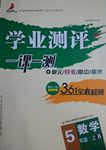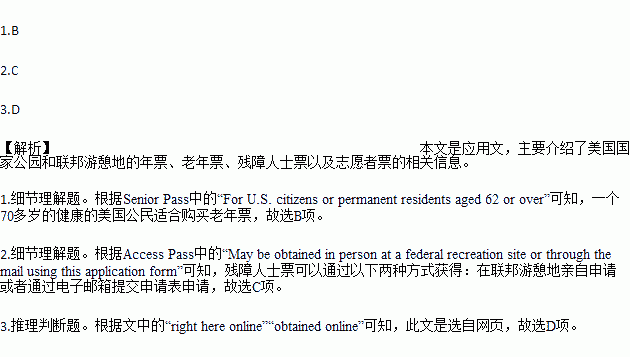题目内容
The National Parks and Federal Recreational Lands Pass Series
A pass is your ticket to more than 2,000 federal recreation sites. Each pass covers entrance fees at national parks and national wildlife refuges as well as standard amenity(便利设施)fees and day use fees for a driver and all passengers in a personal vehicle at per vehicle fee areas at national forests and grasslands, and at lands managed by the Bureau of Land Management, Bureau of Reclamation and U. S. Army Corps of Engineers. Children aged 15 or under are admitted free. The following passes make up the series:
Annual Pass
● $ 80
● Available to everyone.
● Can be obtained in person at a federal recreation site, right here online, or contact us.
● Non-transferable(不可转让的).
Senior Pass
● $ 10, lifetime pass
● For U. S. citizens or permanent residents aged 62 or over.
● May be obtained online, in person at a federal recreation site or through the mail using this application form. Applicants must provide documentation of age and residency or citizenship.
Access Pass
● Free
● For U. S. citizens or permanent residents with permanent disabilities.
● May be obtained in person at a federal recreation site or through the mail using this application form. Applicants must provide documentation of permanent disability and residency or citizenship.
Volunteer Pass
● Free
● For volunteers who acquire 250 service hours with the federal agencies that participate in the Interagency Pass Program.
● Contact your local federal recreation site for more information about volunteer opportunities or visit Volunteer, gov.
1.Which pass is suitable for a healthy U. S. citizen in his seventies?
A. Annual Pass. B. Senior Pass.
C. Access Pass. D. Volunteer Pass.
2.What do we know about the pass series?
A. Only U. S. citizens can access the series.
B. Ownership of Annual Pass can be handed over.
C. Access Pass can be got through two ways.
D. Volunteering guarantees Volunteer Pass.
3.Where is the passage probably taken from?
A. A report. B. A poster.
C. A newspaper. D. A webpage.
 活力课时同步练习册系列答案
活力课时同步练习册系列答案 学业测评一课一测系列答案
学业测评一课一测系列答案

 e care him. Therefore, they asked me to look after her over the weekend. We bought some vegetable and fruit in the supermarket. I also bought him a toy, that he loved very much. On our way back home, he offers to help me with the bags. Seeing this lovely and happy boy, and I couldn't help think of my childhood. How unforgettably a time it was!
e care him. Therefore, they asked me to look after her over the weekend. We bought some vegetable and fruit in the supermarket. I also bought him a toy, that he loved very much. On our way back home, he offers to help me with the bags. Seeing this lovely and happy boy, and I couldn't help think of my childhood. How unforgettably a time it was! also included health foods for the children.
also included health foods for the children.